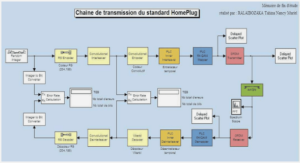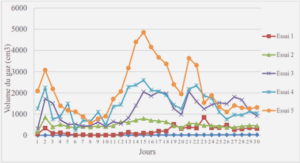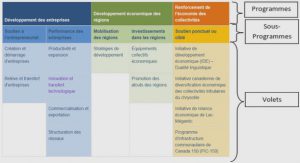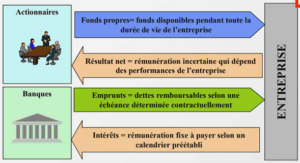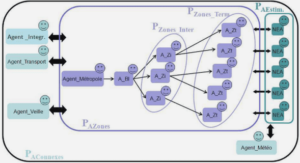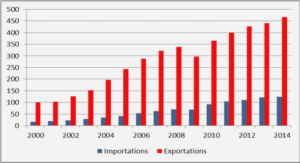Roles of Fibres
In the beginning, researchers tried; by adding fibres, to increase the characteristic concrete mechanics like compressive strength and flexural strength, but the result was limited. It has been observed that the main role of fibres in a cementitious material can be assessed in two ways:
Controlling the propagation of a crack in a working material by reducing the crack opening . The transformation of the brittle behaviour of a material into a ductile behaviour which increases safety during the ultimate loading states.
Fibres generally have the role of reinforcing the structure by opposing the development of cracks and their propagation. Depending on the type, dosage and concrete elements in which they are inserted.
The fibres allow :Improving the cohesion of fresh concrete; for example, rigid fibres change the structure of the granular skeleton; Increased ductility and post-cracking behaviour; Reduction of micro cracking due to dimensional variations, particularly at young age; Reduction of mechanical cracking (external loading); increased flexural tensile strength; Improved fire resistance and resistance to impact, fatigue, wear, and abrasion.
Mineral Fibres
Carbon Fibres
Most carbon fibres are produced by the thermal decomposition of polyacrylonitrile (PAN). The manufacturing process for this type of fibre consists of oxidation at temperatures of around 200-300°C, at different stages of carbonization (1000-1500°C and 1500-2000°C) and finally graphitization (2500-3000°C).
high modulus of elasticity and high resistance ; high specific stiffness (stiffness / density ratio) a low coefficient of longitudinal thermal expansion (CET); low sensitivity to fatigue loads; excellent resistance to chemicals and humidity; stable modulus of elasticity and the resistance of carbon fibres when the temperature increases.
However, carbon fibres have low impact resistance because of their low deformability and a high cost (10 to 30 times more than E-glass). This high cost comes from the high price of raw materials and the complexity of the carbonization and graphitization process. Carbon fibres can be classified as follows:
According to the type of precursor: « PITCH » isotropic fibres characterized by a high elastic modulus. Polyacrilonitrile fibres « PAN » characterized by ultimate resistance and very high cost.
Depending on the physical and mechanical properties: High elastic modulus (HM) ;High resistance (HR).
Glass Fibres
Glass fibres , due to their mechanical qualities and their moderate cost, were the first artificial fibres to be used in building materials. However, their use is limited because of their low chemical resistance to alkalis. In addition, researchers have shown that the introduction of fibres in small quantities does not significantly modify mechanical performance but can, on the other hand, control the cracking due to the withdrawal of drying at a young age. The same effects have also been observed when synthetic fibres are used.
Organic Fibres
Aramid Fibres
Aramid is a generic term for a group of organic fibres of low density and specific strengths (tensile strength/density ratio). They are among the most common reinforcing fibres. Aramid fibres are characterized by: high resistance ; high rigidity ; stability against high temperatures .
The typical operating temperature for aramid fibres varies between -200°C and + 200°C. Three types of aramid fibres are commercially available bearing the brands of manufacturers such as: Kevlar (DuPont, USA) ;Twaron (Akzo, Netherlands) ;Technora (Teijin, Japan).
These fibres are resistant to many chemicals, but they can be degraded by certain acids and alkalis.
Polypropylene Fibres
These fibres obtained by extrusion of polypropylene, come in bundles or in the form individual filaments. When used as bundles, they separate during mixing. They are distributed multidirectional in concrete.
Polypropylene fibres in particular make it possible to better control the plastic shrinkage of fresh concrete but do not improve its post-cracking behaviour (unlike metallic fibres). They improve the workability and cohesion of the concrete (in particular in the case of shotcrete). They are particularly flexible and chemically insensitive but not very resistant to fire (melting temperature between 140 to 170°C.
Definition of Fibre Concrete
In buildings and public works today there is a product whose constituents, manufacturing method, properties and behaviour correspond to those its composite materials. This is fibre concrete, composed of a cement matrix and fibres reinforcing it.
Fibre concrete is a composite material (a mixture of cement, aggregates, water and fibres), which must be considered as homogeneous (with fibres correctly distributed with random orientation), as a conventional concrete can be; unlike the traditional reinforced concrete in which the positioning of the reinforcements is defined according to the applied forces. In other words, a fibre concrete is a concrete in which fibres are incorporated. Unlike traditional reinforcements, the fibres are distributed in the mass of the concrete, they make it possible to constitute a material which presents a more homogeneous behaviour.
It is therefore not reinforced concrete in which the traditional steel reinforcement (welded mesh and bars) would have been replaced by fibres. Fibre concrete should not be regarded as « equivalent » to reinforced concrete as it is currently known. It is a new product which has a tensile strength which is still lower compared to the compressive strength, but which can however be mobilised under normal safety conditions, for which it is necessary to:
Define manufacturing and implementation requirements so that there is effectively « fibre concrete ». Study the laws of behaviour in order to specify its specific fields of use and define sizing criteria. Incorporate various fibres into the fragile material that this concrete has been and have it continue to be the subject of much research; also for the several applications that have also emerged.
Systematic research has been carried out since 1960 to understand the behaviour under various stresses of fibre-reinforced concrete. The latter has been the subject of particular interest from numerous researchers who have published various articles and reports on the subject .
Advantages and Disadvantages of FRC
The following improvements in the properties of fibre concrete are taken for granted. Higher impact resistance ; Increase in breaking energy ; Improved ductility ; Different behaviour at cracking ; Resulting in a noticeable delay in cracking.
But some disadvantages have also been noticed in the use of fibres: Reduced manoeuvrability due to the presence of fibres when the percentage of these is high;
Introducing a certain type of fibre into concrete with traditional characteristics proves to be very difficult ;
During delivery, the fibres are entangled, hence the formation of sea urchins during mixing involves the difficulty of implementation;
Currently the price of fibres is relatively very high and therefore the cost price per m3 of fibre concrete may seem excessive compared to that of traditional concrete.
|
Table des matières
CHAPTER 1: FIBROUS REINFORCEMENTS
I. Introduction
II. History
III. Roles of fibres
IV. Factors influencing the behaviour of fibre reinforced concrete
V. Different types of fibres used
1. Metallic fibres
2. Mineral fibres
a). Carbon fibres
b). Glass fibres
3. Organic Fibres
a). Aramid fibres
b). Polypropylene fibres
4. Vegetable fibres
a). Leaf fibres
b). Stem fibres
c). Wood fibres
d). Surface fibres
5. Animal fibres
VI. Uses of fibres in construction
VII. Fibre reinforced concrete
1. Introduction
2. Definition of fibre concrete
3. History
4. The reinforcement principle
5. Advantages and disadvantages
VIII. Conclusion
CHAPTER 2: USES OF FIBRES IN CEMENTITIOUS MATERIALS
I. Introduction
II. The fibre concrete matrix
III. Some cases of fibre based concrete formulation
1. Formulation of fibre reinforced self-compacting concrete
a). Materials
b). Mixing and testing procedures
c). Characterisation of fibre-reinforced self compressing concretes
2. Formulation of ultra-high performance fibre reinforcement concrete
a). The principle of formulation
b). An example of formulation
c). Laboratory manufacturing
IV. The advantages of fibre concrete by domains of application
V. Conclusion
CHAPTER 3: INFLUENCE OF FIBRES ON THE CHARACTERISTICS OC CEMENTITIOUS MATERIALS
I. Introduction
II. Dosage of Fibres in Concrete
1. Rheological Properties
2. Shrinkage and Mechanical Properties
III. Geometry of Fibres in Concrete
1. Length of Steel Fibres
2. Aspect Ratio of Steel Fibres
3. Slump Test
4. Flexural Strength
5. Flexural Toughness and Residual Strength
IV. Distribution and Orientation of Fibres in Concrete
1. Workability, Fibre Distribution and Post Cracking Behaviour of SFRC
2. Influence of Fibre Orientation on Compression and Bending Behaviour
3. Compression Behaviour
4. Bending Behaviour
5. Conclusion
V. Conclusion
CHAPTER 4: CHARACTERIASATION OF MATERIALS
I. Introduction
II. Materials
1. Water
2. Admixtures
3. Aggregates
4. Limestone Filters
III. Particle Size Distribution Test
IV. Apparent Density
V. Absolute Density
1. Graduated Cylinder Method
2. The Pycnometer Method
VI. Sand Equivalent Test
VII. Absorption
VIII. Formulation of Fibre Reinforced Self Compacting Concrete
GENERAL CONCLUSION
BIBLIOGRAPHY
![]() Télécharger le rapport complet
Télécharger le rapport complet

